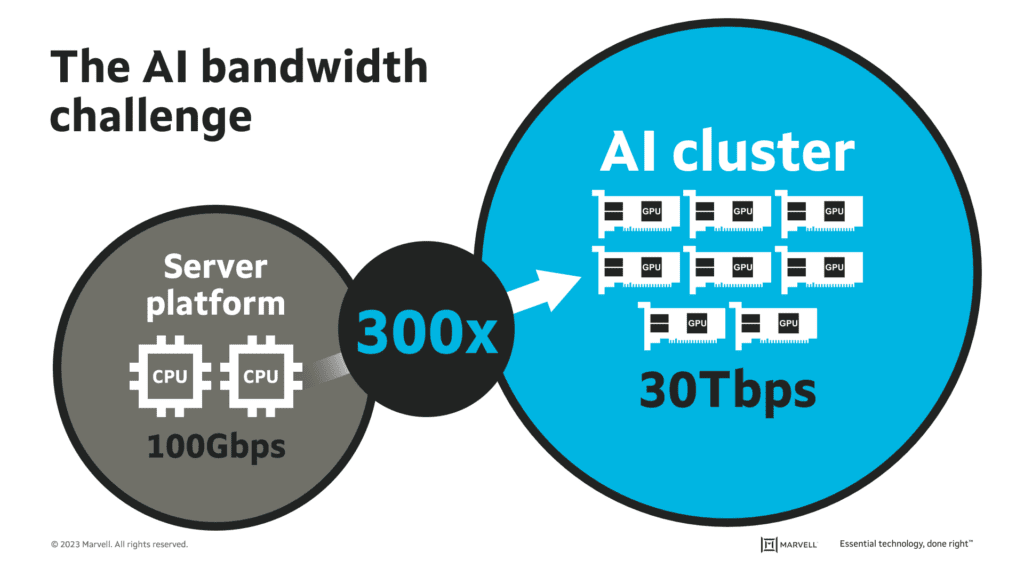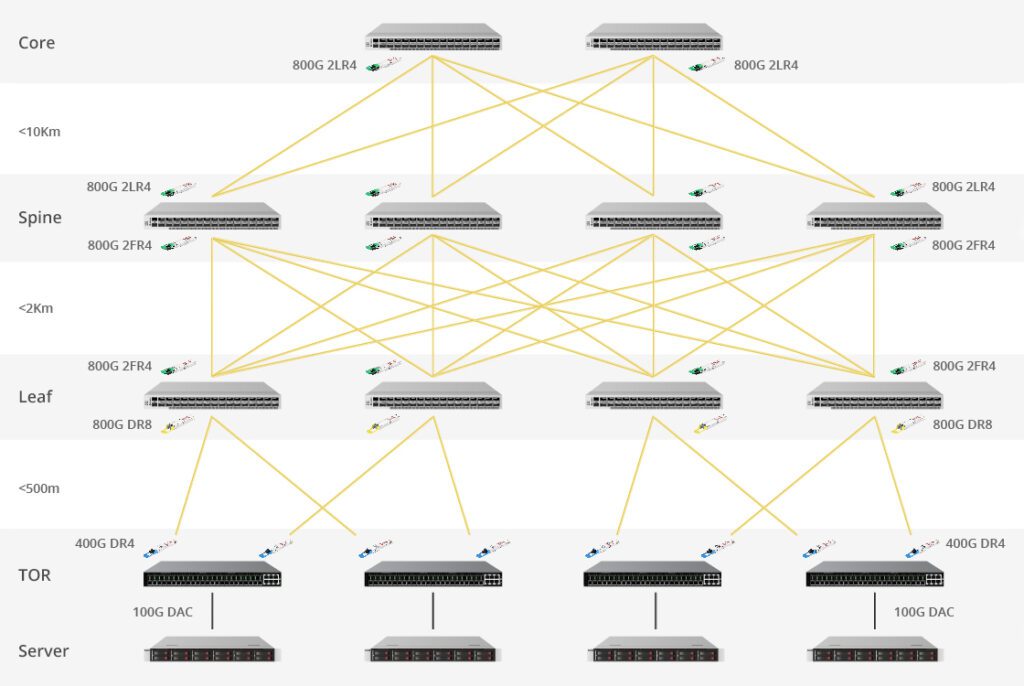Artificial intelligence (AI) has become a driving force behind technological advancements in various industries. As AI applications continue to evolve, the demand for high-speed data transmission has surged, leading to the rise of 800G optical transceivers.In this article, we will explore how the increasing computing power of AI systems is fueling the demand for 800G optical transceivers.
The AI Revolution and Data Intensity:
AI applications, such as machine learning and deep learning, heavily rely on vast amounts of data. As AI models become more complex and data-intensive, there is a need for faster and more efficient data transmission. This is where 800G optical transceivers come into play. With their high-speed capabilities, these transceivers can handle the massive data flows required for AI training and inference, ensuring optimal performance and reduced processing times.
Growing Need for Bandwidth:
AI workloads generate enormous volumes of data that need to be processed, analyzed, and transmitted in real-time. The demand for higher bandwidth arises from the need to support these data-intensive operations. 800G optical transceivers provide the necessary bandwidth to facilitate the seamless transfer of data between AI systems, enabling faster communication and reducing latency. This increased bandwidth enables AI systems to process larger datasets and perform complex computations more efficiently.
Enabling Real-Time Decision-Making:
Many AI applications require real-time decision-making capabilities, such as autonomous vehicles, robotics, and smart city infrastructure. These applications rely on high-speed data transmission to process and respond to data in real-time. 800G optical transceivers play a critical role in enabling the rapid exchange of data between AI systems, allowing for quick decision-making and enhancing the overall performance and reliability of AI-driven applications.
Advancements in AI Computing Power:
The rapid advancements in AI computing power, driven by technologies like graphics processing units (GPUs) and specialized AI accelerators, have paved the way for more sophisticated AI models and algorithms. These advancements have increased the demand for high-speed data transmission to effectively utilize the computing power of AI systems. 800G optical transceivers provide the necessary infrastructure to harness the full potential of AI computing, ensuring seamless connectivity and data transfer within AI ecosystems.
Future Growth and Innovation:
As AI continues to advance and permeate various industries, the demand for 800G optical transceivers is expected to grow further. With ongoing research and development, the cost-effectiveness and performance of 800G transceivers are likely to improve, making them more accessible to a broader range of applications. This growth will drive innovation, enabling AI-driven technologies to transform industries and improve efficiency, productivity, and decision-making processes.


The increasing computing power of AI systems has significantly contributed to the growing demand for 800G optical transceivers. These high-speed transceivers enable the seamless transmission of data, supporting data-intensive AI workloads and facilitating real-time decision-making. As AI applications continue to evolve, the demand for 800G optical transceivers is set to rise, driving further innovation and advancements in high-speed data transmission. The synergy between AI computing power and 800G optical transceivers holds immense potential to shape the future of AI-driven technologies and revolutionize industries across the globe.
Our Newest 800G optical transceiver


PNA Fiber’s 800G QSFP-DD DR8++ 10km silicon photonics module employs four 1310nm CW lasers. It features a maximum power consumption of less than 18W, TDECQ below 2dB, and supports 8 lanes of 100G PAM4 optical signals. This module meets the 10km dual-fiber transmission requirement and achieves an OMA RXsen of -7.1dBm @ 2.4E-4 Pre-FEC 53.125GBd, exceeding the 500-meter link budget specified by IEEE 802.3. The module successfully completed a 10km optical fiber loopback test for 24 hours with no packet loss when operating at 800GE traffic rates with KP4 FEC enabled. The current released version supports both MPO16/APC and Dual MPO12/APC connector architectures. In comparison to conventional 800G optical modules using the 8-lane EML solution, the silicon photonics module employs fewer lasers, allowing, for instance, the 800G DR8 to achieve lower power consumption with improved performance.


With the ongoing trend of AI high computing power, PNA Fiber, benefiting from its R&D strength, persistent efforts, and support from the silicon photonics industry chain, has overcome all key bottlenecks in silicon photonics technology. It is believed that more silicon photonics products will be released, fostering resonance among the industry chain and customers.




